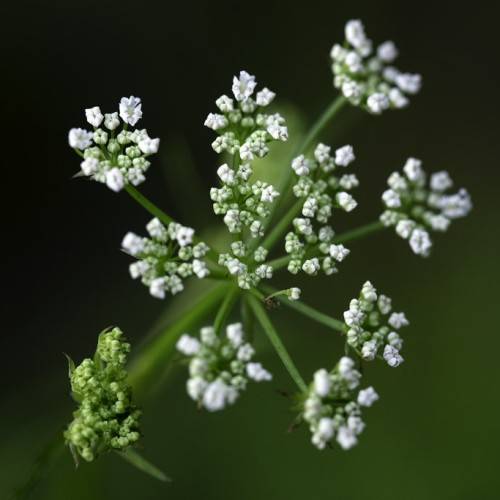
Spotted Water Hemlock
Cicuta maculata var. angustifolia
Also Known As - Spotted CowbaneWatering:
Frequent
Hardiness Zone:
Sun:
full sun,part shade
Leaf:
Yes
Growth Rate:
Low
Poisonous To Humans:
Yes
Poisonous To Pets:
Yes
Salt Tolerant:
Yes
Invasive:
Yes
Care Level:
Extreme
watering
Water Douglas' Water Hemlock often enough to keep the soil moist. This is especially important during the summer when the plant is actively growing. During these hot months, water the Douglas Water Hemlock 1-2 times a week. In cooler months, such as spring and autumn, water the plant less often. Aim to water the soil every 10-14 days. Make sure to check the soil to ensure it isn't overly moist and watch out for signs of overwatering such as yellowing leaves. In winter, Douglas' Water Hemlock should only be watered once a month.
sunlight
Douglas' Water Hemlock is a flowering plant that grows best in full sun and in moist soil. This plant is native to western North America, where it can be found in close proximity to bodies of water in fields, meadows, rivers, and marshes. It prefers full sun from late morning to late afternoon but can tolerate some shade and still grow. In general, when growing Douglas' Water Hemlock, ensure that it gets about 6-8 hours of direct sunlight a day to ensure healthy growth and flowering. This can vary depending on the season, with more sun hours required in the summer months and fewer hours in the winter.
pruning
For most healthy Douglas' Water Hemlock (Cicuta douglasii (de)) plants, pruning should be done every 1-2 years. Pruning should be done in early summer or early autumn, when the plant is actively growing. When pruning, focus on removing any dead or damaged branches, as well as any overly long or leggy growth. This will help keep the plant shaped and tidy, and also open up areas where new healthy growth can occur. Finally, shorten the stems that remain after pruning to help maintain a neat and even shape.
